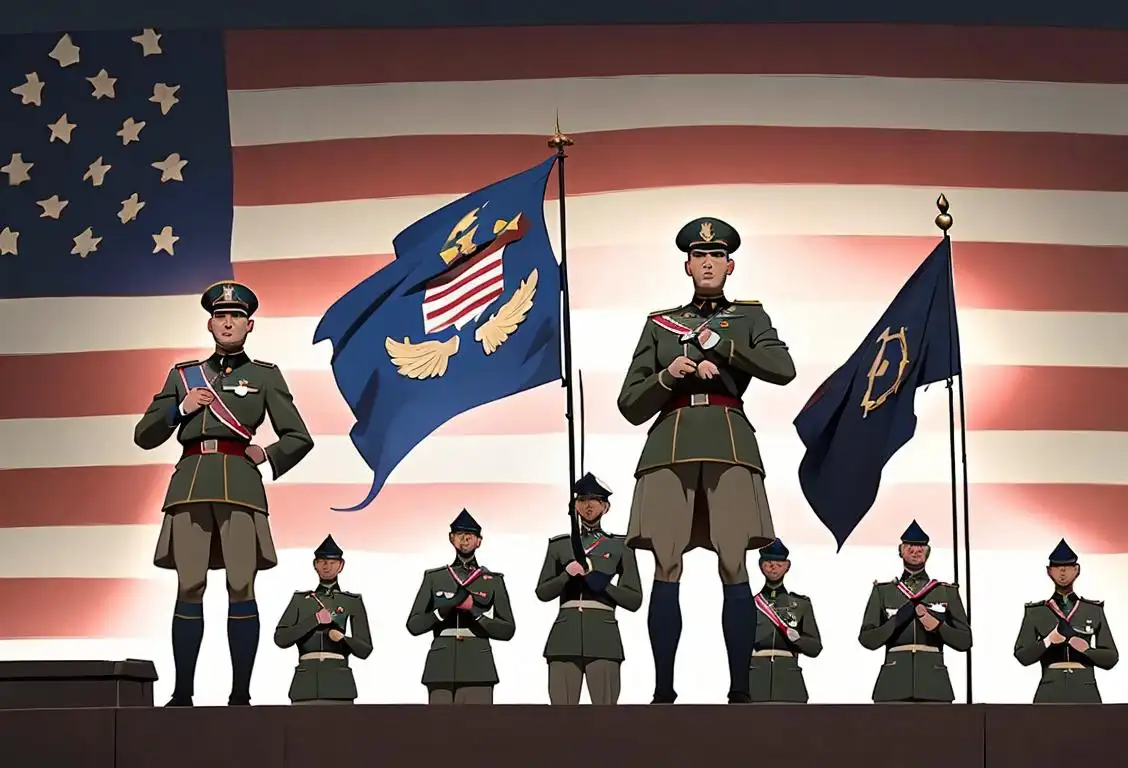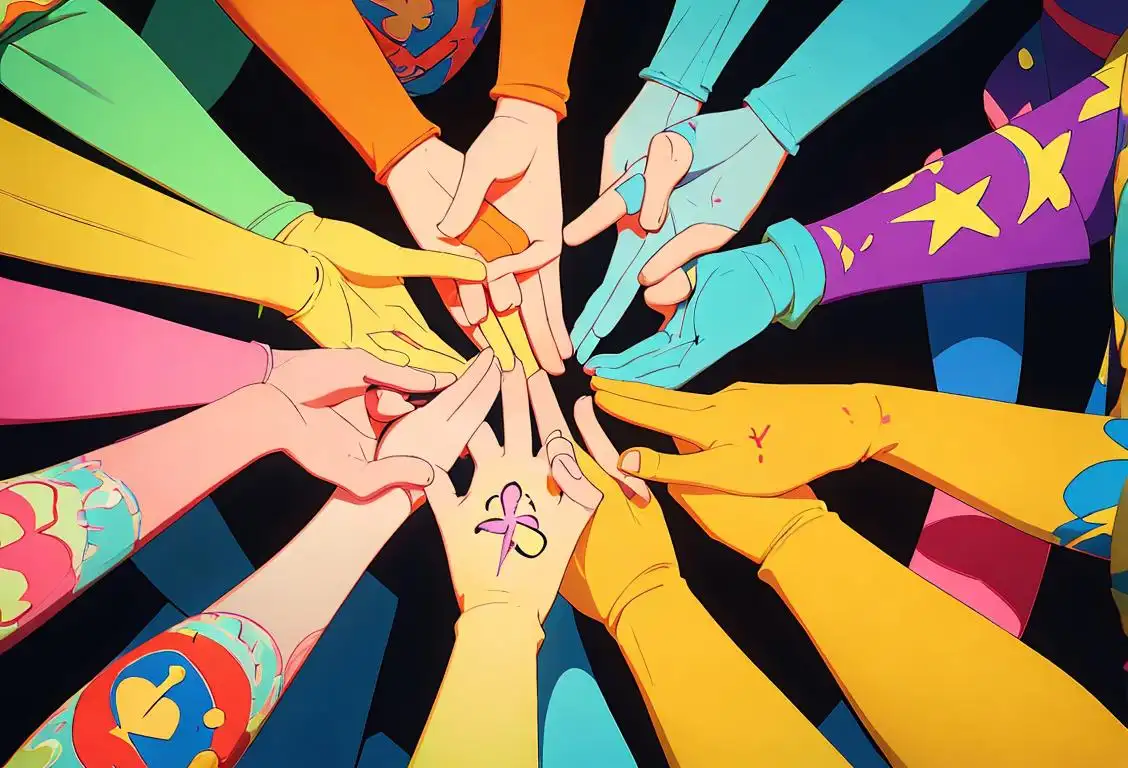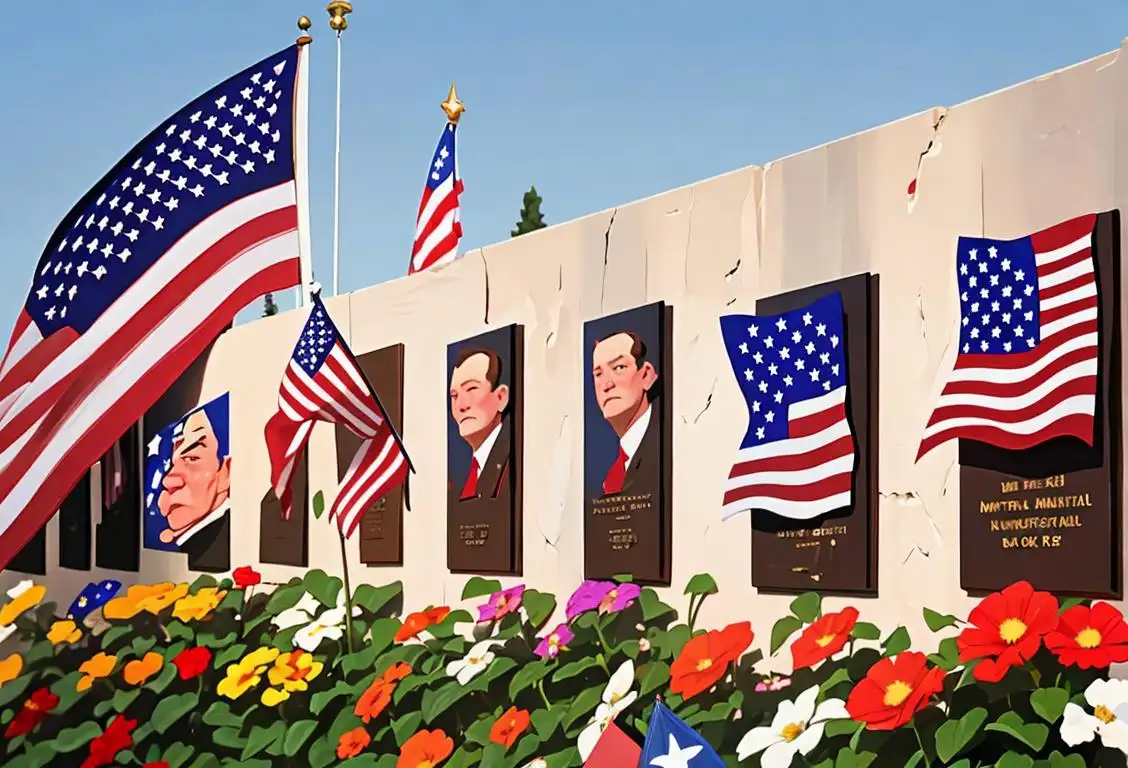National Seeing Eye Dog Day

Welcome to WhatNationalDayIsIt.com, where we uncover the fascinating history behind all those quirky national days! Today, we're shining the spotlight on National Seeing Eye Dog Day, a day dedicated to honoring these incredible canine companions.
When is Seeing Eye Dog Day?
It's national seeing eye dog day on the 29th January.
The Incredible Journey of Seeing Eye Dogs
On this special day, we celebrate the furry superheroes who lend their loving eyes to those in need. National Seeing Eye Dog Day raises awareness about the invaluable role these four-legged angels play in the lives of the visually impaired.
Guide dogs, better known as seeing eye dogs, have been assisting and guiding visually impaired individuals for many years. Their keen senses, intelligence, and unwavering devotion help these remarkable dogs navigate the world alongside their human partners.
The history of seeing eye dogs can be traced back to the early 20th century when a compassionate blind woman, Dorothy Harrison Eustis, recognized the potential of using highly trained dogs to assist the visually impaired. She founded The Seeing Eye, the first guide dog school in the United States, in 1929. Since then, seeing eye dogs have been enhancing the quality of life for visually impaired individuals all around the world.
The Training and Bonding Process
The process of training a seeing eye dog is an incredible feat. It takes dedication, time, and a whole lot of doggy treats. Puppies are carefully selected for their temperament, intelligence, and willingness to work. These little bundles of joy then embark on an intense training program that lasts for months, honing their skills in obedience, socialization, and guide dog-specific tasks.
Once they've completed their training, seeing eye dogs are matched with visually impaired individuals based on the person's lifestyle, personality, and mobility needs. The partnership formed between a seeing eye dog and its handler goes beyond mere reliance; it's a deep bond built on trust, love, and mutual respect.
Appreciating Our Furry Heroes
National Seeing Eye Dog Day is a chance for us to acknowledge the incredible service and companionship that these dogs provide. It's a day to appreciate their unwavering dedication and honor the tireless efforts put forth by guide dog organizations and trainers around the world.
So, while we honor these amazing dogs today, let's also reflect on the life-changing impact they have on the visually impaired community. They help their humans navigate the world with greater independence, confidence, and above all, a wagging tail by their side.
History behind the term 'Seeing Eye Dog'
1927
Morris Frank receives his first guide dog.
In 1927, Morris Frank, a blind man from Nashville, Tennessee, became the first person in the United States to receive a guide dog. The dog, a female German Shepherd named Buddy, was trained by Dorothy Eustis, an American woman living in Switzerland. This marked the beginning of the partnership between humans and guide dogs, allowing visually impaired individuals to navigate their surroundings more independently.
1927
The Origins of 'Seeing Eye Dog'
In 1927, the term 'Seeing Eye Dog' was coined by American dog trainer Morris Frank. Morris had lost his sight due to a childhood accident and wanted to regain his independence. He learned about a school in Switzerland that trained guide dogs to assist visually impaired individuals, and he became determined to bring this concept to the United States.
1920
The Birth of the Seeing Eye Dog
In 1920, a blind World War I veteran named Morris Frank from Nashville, Tennessee, traveled to Switzerland to receive training with a guide dog named Buddy. This marked the birth of the term 'seeing eye dog,' which became synonymous with guide dogs for the blind.
1928
The term 'seeing eye dog' is coined.
The term 'seeing eye dog' was coined in 1928 by Morris Frank during an interview with a newspaper reporter. He used this term to describe his guide dog Buddy, emphasizing the dog's role in helping him 'see' the world in a different way. The phrase quickly gained popularity and became a commonly recognized term for guide dogs.
1929
The Seeing Eye, Inc. is Established
In 1929, Morris Frank and his wife, Dorothy Harrison Eustis, founded The Seeing Eye, Inc. in the United States. This organization paved the way for the training and utilization of guide dogs to assist individuals who are blind or visually impaired.
1928
First Guide Dog Training in the US
In 1928, Morris Frank traveled to Switzerland to attend the school Guide Dogs for the Blind, which was founded by Dorothy Harrison Eustis. Morris received his first guide dog, a female German Shepherd named Buddy, who he later referred to as his 'Seeing Eye Dog.' Buddy became Morris' loyal companion and helped him navigate the busy streets of New York City, marking the beginning of guide dog training in the United States.
1932
First Guide Dog Training School in the United States
In 1932, The Seeing Eye, Inc. established its first guide dog training school in Nashville, Tennessee. This milestone not only provided rigorous training for guide dogs but also raised awareness and promoted the usage of seeing eye dogs.
1929
Creating The Seeing Eye Organization
In 1929, Morris Frank, along with Dorothy Harrison Eustis, founded The Seeing Eye, Inc., in Morristown, New Jersey. The organization aimed to train guide dogs and provide them to visually impaired individuals. The term 'Seeing Eye Dog' gained popularity and became a widely recognized term for guide dogs in the English-speaking world.
1929
The Seeing Eye is established.
In 1929, Morris Frank established The Seeing Eye, the first guide dog school in the United States. Located in Nashville, Tennessee, the school aimed to train guide dogs and match them with visually impaired individuals. This organization played a crucial role in promoting the use of guide dogs as a means of enhancing independence and mobility for the blind.
1930s
Expansion of The Seeing Eye
Throughout the 1930s, The Seeing Eye organization expanded its training program and increased awareness about the benefits of guide dogs. They pioneered many innovative training techniques and breed selections. The efforts of The Seeing Eye helped establish the use of guide dogs as a reliable and effective mobility aid for people with visual impairments.
1933
Archer, First Seeing Eye Dog in America
In 1933, The Seeing Eye, Inc. introduced the first seeing eye dog named Archer. Archer was one of the first guide dogs in America to undergo formal training and be paired with a blind handler, cementing the crucial role of guide dogs in improving the independence and mobility of visually impaired individuals.
1931
Guide dog training expands to other countries.
During the early 1930s, the concept of guide dog training spread beyond the United States. Sight-impaired individuals from various countries began to travel to the United States to receive training at The Seeing Eye. This helped in establishing guide dog programs in other parts of the world, leading to increased availability of guide dogs for visually impaired individuals globally.
1942
Coordinated Training at The Seeing Eye
In 1942, The Seeing Eye implemented the concept of coordinated training, where both the visually impaired individual and the guide dog train together as a team. This approach greatly improved the partnership and communication between the guide dog and the handler, leading to better mobility and independence for the visually impaired community.
1944
Guide Dogs for War Blinded Veterans
Following World War II, guide dogs' significance expanded to aid war-blinded veterans in regaining their independence. Organizations like The Seeing Eye, Inc. worked alongside the Veterans Administration to supply trained guide dogs to visually impaired veterans, improving their quality of life and reintegrating them into society.
1969
International Guide Dog Federation is founded.
In 1969, the International Guide Dog Federation (IGDF) was founded to promote excellence in the breeding, training, and provision of guide dogs. The organization works with guide dog schools worldwide to ensure high standards of training and welfare for guide dogs and their handlers. The establishment of the IGDF further enhanced the global recognition and standardization of guide dog programs.
1939–1945
Guide Dogs in World War II
During World War II, guide dogs trained by The Seeing Eye played a crucial role in assisting visually impaired soldiers. The dogs guided the soldiers through challenging terrains, provided them with companionship, and served as loyal guardians. The exceptional performance of guide dogs during the war further solidified their reputation and led to increased acceptance and appreciation globally.
Today
International Recognition and Continuing Service
The term 'Seeing Eye Dog' remains the most commonly used term in many English-speaking countries to refer to guide dogs. These remarkable animals continue to assist visually impaired individuals worldwide, providing them with increased mobility, independence, and companionship. The Seeing Eye organization and other guide dog training facilities continue to refine their techniques and breed selections, ensuring that visually impaired individuals can rely on these incredible dogs for their daily tasks and adventures.
Did you know?
Did you know that seeing eye dogs can even distinguish between different traffic light colors? Their remarkable training helps them ensure the safety of their visually impaired handlers.Tagged
awareness loved onesFirst identified
29th January 2016Most mentioned on
29th January 2017Total mentions
66Other days
Compliment Day
Cheese Pizza Day
Pumpkin Day
Medal Of Honor Day
Guac Day
Foundation Day
Suicide Prevention Day
Memorial Day
Cancer Survivors Day
Bacon Day









